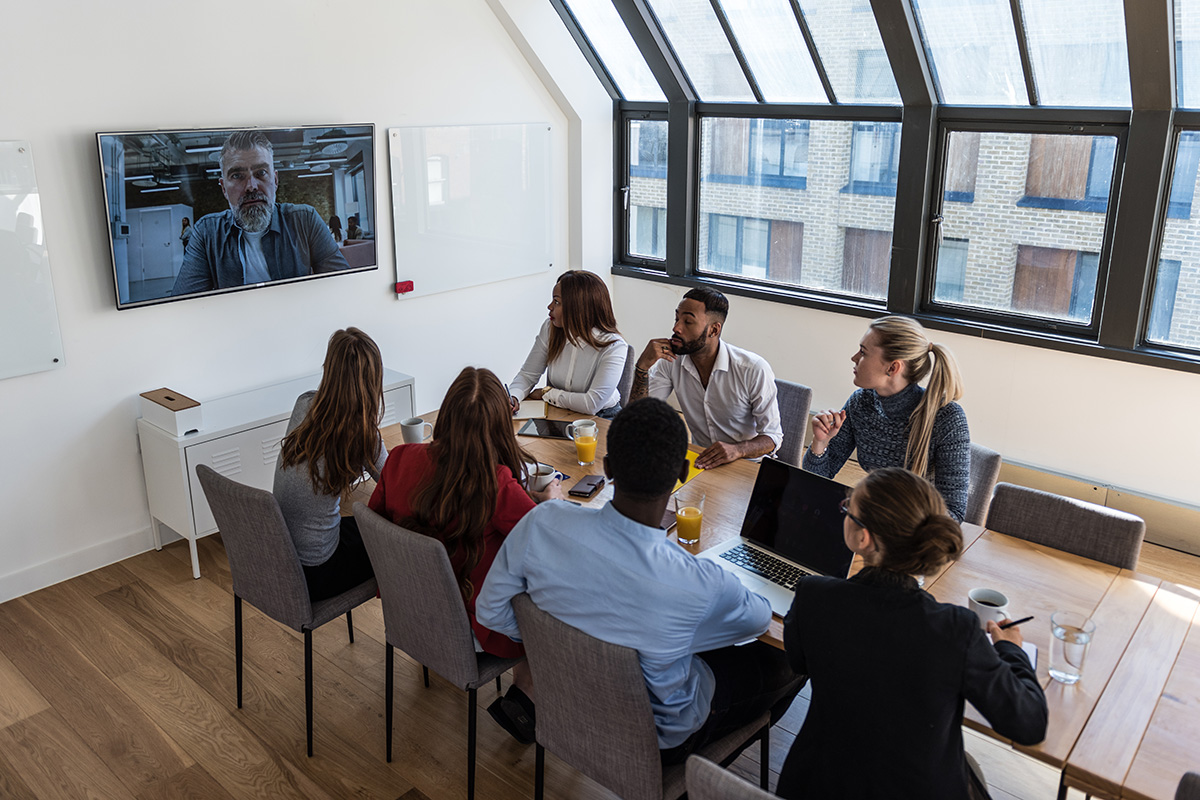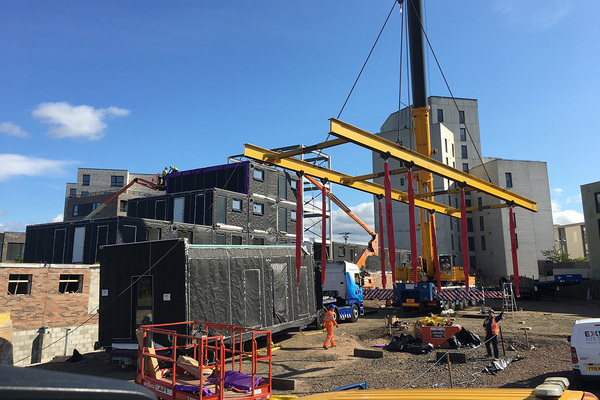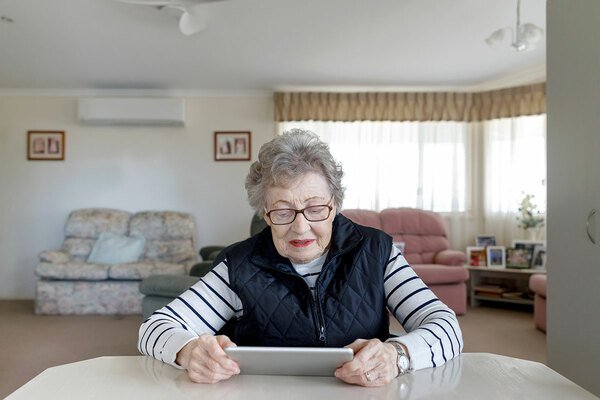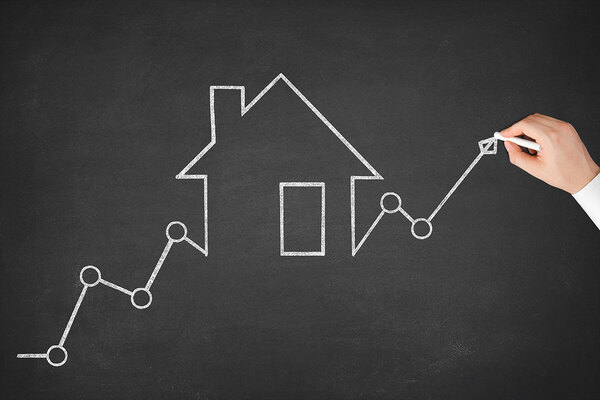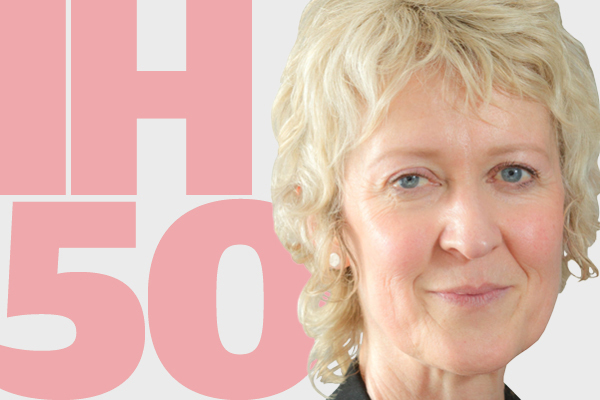It’s time to consider what home looks like in the post-COVID-19 ‘new normal’ way of living
As many as a third of us could be working from home in the future. Housing associations will need to adapt to this new normal and ensure workers are digitally included – at prices they can afford. John Roberts from AO explains more
In association with:

Lockdown has highlighted how important digital inclusion is across society, from children being home-schooled to older people who are isolating. We are now beginning to plan for a ‘new normal’, in which up to 30% of people continue to work from home.
AO Business supplies appliances and electricals to tenants, as well as landlords, property managers, house builders and other organisations, so we asked John Roberts, the company’s founder and chief executive, what our new home life might involve.
The whole nation adapted its way of living and working because of COVID-19. As lockdown eases, we are changing our behaviour, how we relate to one another and how we think, which is leading us to consider how we will move forward and create a different looking future. How has AO Business responded and adapted to the new normal?
The changes have been seismic and unprecedented. One of the issues has been supply, as all store-based electrical retail had to close. With everyone moving to working from home, we had to move at pace and managed to get all our call centre staff and offices set up within 72 hours.
From an operational point of view, we had to adapt our warehouses for social distancing to create more space – all while still working. We did this by opening another warehouse space to spread out our staff and I’m proud that we didn’t miss a day of delivery. Then we had to work out how to flex that for customers, such as when delivering to someone living on the top floor of a tower block, because we couldn’t just leave goods on the doorstep. So our drivers had to use their common sense and discretion, and still stay safe.
We were very busy initially, as there were huge spikes in demand for home-working products, home-schooling equipment, freezers and TVs, as more people were spending time at home. This was challenging to our supply line, and there was a lot of collaboration and complexity to deal with. But overall, across the industry and sector, I think we did well.
Many companies are now looking at how they might work, not just in the next six months, but in the long term. What can organisations do?
The big question is: what does home look like for people? There are huge disparities across our society. For some people, working from home is technically possible but emotionally or mentally impossible. We have to consider and accommodate this.
It takes 66 days to create a new habit and employees are now adapted to home-working. People have had to use video conferencing apps, such as Zoom and Teams, and now have a real experience and knowledge of it at scale. We all know it’s not the same as being face to face with somebody, but it’s a good substitute, quick and efficient.
However, we need to provide balance – a level playing field, if you like – and make it democratic for all users. If we have six people together in a meeting room but one person on a screen at the end of the desk because they cannot attend the meeting, that’s not balanced. So moving forward, when we have people on a call from different locations, even those in the same office will video conference as well, rather than sit in a meeting room. That will make everyone feel more comfortable and less intimidated, so the meeting will ultimately be more productive. Our rule will be ‘all in the meeting room or all on video conferencing’.
What role do you see technology playing to help people and communities in the next year?
The pandemic has created a significant gap in the capability of certain demographics. There’s a real price to poverty. We need to be more aware that many homes aren’t connected and those who can’t afford it are paying the most now – if they don’t have the money to pay a deposit, their finance options are limited. Plus, if you can’t afford a breakdown in technology, you’re more inclined to take out insurance as well, which raises the cost.
AO has been trying to build a model for this in its rental business for washing machines, fridges and smartphones. By making products more affordable at lower rental prices, we are hopefully removing some of the poverty that surrounds this issue.
In the past five years, AO has been working with housing associations to make digital more affordable and more inclusive by reducing the costs of the supply chain. We are working with Accent, L&Q and Optivo, among others, to find a model that’s sustainable.
The final piece of the jigsaw would be to use housing associations’ billing platforms to include the rental schemes we offer. AO Business is working with the Financial Conduct Authority to work out the permissions and legal side for benefits to make this happen. Over time, this could reduce rent arrears, as it will free up tenants’ disposable income, as well as ultimately being less stressful – debt is the single biggest cause of stress and mental health-related issues, as well as family breakdowns, so if we can release that pressure by making essentials more affordable and accessible, it will help.
If we all become more digitally connected, how will this change the behaviours of communities over the next few years?
The older generation will find their lives have changed the most. We have seen a massive rise in purchases of smartphones by over-60s. This is the demographic that has had to isolate the most and experienced the most fatalities from COVID-19, resulting in a sense of loneliness and a feeling of having no purpose. A whole generation of people who might not have been as connected as they should have been have been forced to adopt digital products to reduce their isolation.
There will be many bigger changes in behaviour in society as well. There is now a greater sense of community and wanting to contribute. At the beginning of lockdown, for example, 750,000 people volunteered to help the NHS to drop off medicine to patients. People want to volunteer and now there are more situations where they can do that, so I think that habit will last.
COVID-19 will have its positives eventually. It is forcing us to look at how we live and fill voids. I think what we need to do next is think more about how communities work for the next generation and provide them with places to meet, inspirational things to do and a sense of purpose. We need more community hubs in new areas of housing.
From a housing perspective, more people will need their home to work smarter, now that we’ve all had more time indoors to consider how well it works. This means developers and builders need to think about how connected homes are, because buyers will insist that it happens.
COVID-19 has raised our consciousness about the importance of what we have previously taken for granted concerning connectivity, the smart home and the products that drive it. When there’s a need for technology to make our lives better, it will get created and happen. It will be interesting to see what the home looks like this time next year.
More on coronavirus
To see all our coronavirus coverage to date – including the latest news, advice to providers, comment and analysis – use the link below.
